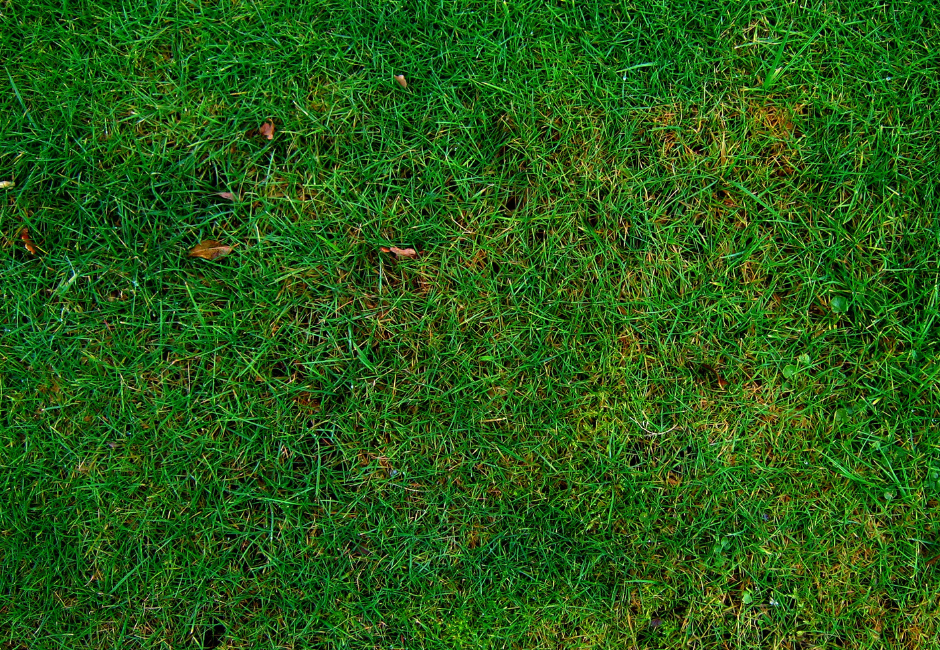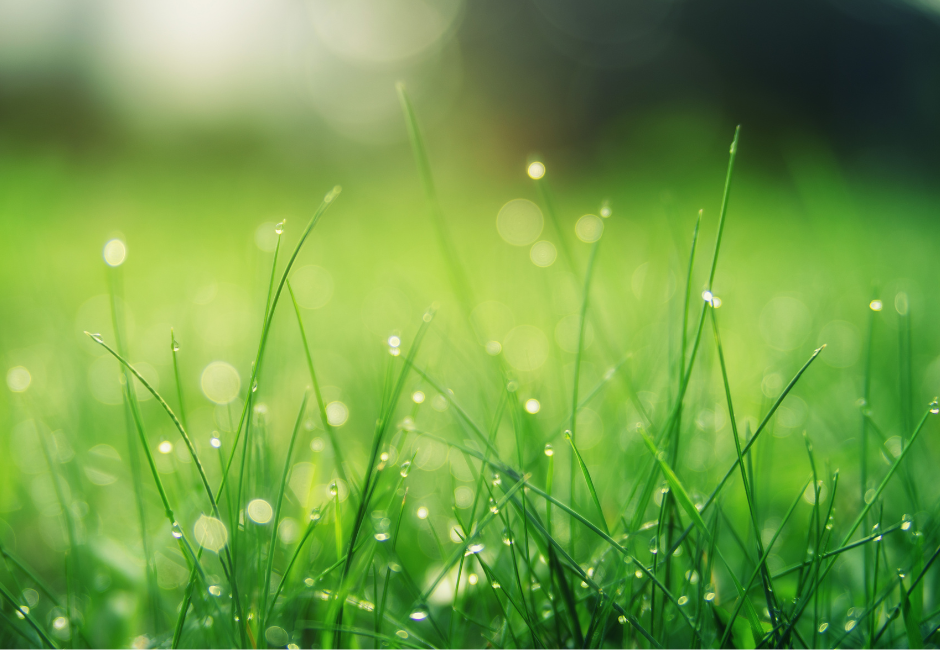Choosing the right type of grass for your lawn is crucial for achieving a lush, green, and healthy landscape. The type of grass you select will not only affect the aesthetic appeal of your lawn but also its durability, maintenance requirements, and overall health. This article aims to guide you through the process of selecting the best grass for your lawn by considering factors such as climate, soil type, sunlight exposure, and lawn use. By the end of this guide, you will be equipped with the knowledge to make an informed decision that will keep your lawn looking its best year-round.
Understanding Grass Types

Cool-Season Grasses
Characteristics:
- Thrive in cooler climates and grow actively in the spring and fall.
- Tend to go dormant during the hot summer months.
- Examples: Kentucky Bluegrass, Fescue, Ryegrass.
Kentucky Bluegrass:
- Fine-textured, dark green, and forms a dense, attractive lawn.
- Ideal for areas with cold winters and moderate summers.
- Requires frequent watering and fertilization.
Fescue:
- Tolerates shade better than most cool-season grasses.
- Less maintenance-intensive, with moderate watering and fertilization needs.
- Can withstand drought conditions once established.
Ryegrass:
- Fast-growing, making it suitable for quick lawn establishment.
- Often used in seed blends to improve durability.
- Requires regular mowing and maintenance.
Warm-Season Grasses
Characteristics:
- Thrive in warmer climates and grow actively during the late spring and summer.
- Tend to go dormant and brown during the cooler months.
- Examples: Bermuda, Zoysia, St. Augustine.
Bermuda Grass:
- Tolerates heat and drought exceptionally well.
- Forms a dense, resilient lawn ideal for high-traffic areas.
- Requires frequent mowing and maintenance.
Zoysia Grass:
- Slow-growing, but forms a thick, carpet-like lawn.
- Tolerates a variety of soil conditions and moderate shade.
- Requires less frequent mowing but benefits from regular fertilization.
St. Augustine Grass:
- Broad, flat blades and a coarse texture.
- Excellent for shaded areas and tolerates salty soils.
- Needs regular watering and fertilization to maintain its lush appearance.
Factors to Consider When Choosing Grass

Climate
Choosing a grass type that is well-suited to your regional climate is fundamental. Cool-season grasses are ideal for regions with cold winters and moderate summers, whereas warm-season grasses excel in areas with hot summers and mild winters. Consult local gardening resources or a landscaping professional to determine which grass types are best suited for your climate.
Soil Type
Soil type significantly influences grass growth and health. Conduct a soil test to understand your soil’s pH level, texture, and nutrient content. Amend your soil as needed to create optimal growing conditions for your chosen grass type. Sandy soils may require additional organic matter to retain moisture, while clay soils might need aeration to improve drainage.
Sunlight Exposure
Assess the amount of sunlight your lawn receives throughout the day. Some grasses, like Bermuda and Zoysia, thrive in full sun, while others, such as Fescue and St. Augustine, can tolerate partial shade. Matching the grass type to your lawn’s sunlight conditions will ensure better growth and health.
Maintenance Requirements
Different grass types have varying maintenance needs. Consider how much time and effort you are willing to invest in lawn care. High-maintenance grasses may require frequent mowing, watering, and fertilization, whereas low-maintenance options might need less frequent attention. Choose a grass type that aligns with your maintenance preferences and lifestyle.
Lawn Use and Traffic
If your lawn will experience heavy foot traffic, such as from children playing or pets, select a durable grass type that can withstand wear and tear. Bermuda and Zoysia grasses are excellent choices for high-traffic areas due to their resilience and ability to recover quickly from damage.
Detailed Overview of Popular Grass Types

Kentucky Bluegrass
- Characteristics: Fine-textured, dark green, forms a dense lawn.
- Pros: Attractive appearance, good cold tolerance.
- Cons: High maintenance, requires frequent watering.
- Ideal Conditions: Cold winters, moderate summers, full sun to partial shade.
- Maintenance Tips: Regular watering and fertilization, mow to 2-3 inches.
Fescue
- Characteristics: Shade-tolerant, drought-resistant.
- Pros: Low maintenance, versatile.
- Cons: May struggle in extreme heat.
- Ideal Conditions: Cool climates, shaded areas, well-drained soil.
- Maintenance Tips: Moderate watering, mow to 2-3.5 inches, occasional fertilization.
Ryegrass
- Characteristics: Fast-growing, durable.
- Pros: Quick lawn establishment, good for overseeding.
- Cons: Requires regular mowing, not drought-tolerant.
- Ideal Conditions: Cool climates, full sun to partial shade.
- Maintenance Tips: Regular mowing and watering, overseed annually.
Bermuda Grass
- Characteristics: Heat and drought-tolerant, dense growth.
- Pros: Durable, excellent for high-traffic areas.
- Cons: High maintenance, invasive.
- Ideal Conditions: Warm climates, full sun, well-drained soil.
- Maintenance Tips: Frequent mowing, regular fertilization, aerate annually.
Zoysia Grass
- Characteristics: Slow-growing, carpet-like texture.
- Pros: Low maintenance, tolerant of various conditions.
- Cons: Slow to establish, expensive.
- Ideal Conditions: Warm climates, full sun to partial shade.
- Maintenance Tips: Less frequent mowing, occasional fertilization, ensure good drainage.
St. Augustine Grass
- Characteristics: Broad blades, coarse texture.
- Pros: Good shade tolerance, handles salty soils.
- Cons: High water and fertilizer needs, susceptible to pests.
- Ideal Conditions: Warm climates, shaded areas, moist soil.
- Maintenance Tips: Regular watering, fertilize frequently, mow to 2.5-4 inches.
Steps to Choosing the Right Grass for Your Lawn

1. Assess Your Lawn’s Specific Conditions:
- Determine your region’s climate.
- Test your soil’s pH and texture.
- Evaluate sunlight exposure.
2. Research and Select the Appropriate Grass Type:
- Match grass characteristics to your lawn’s conditions.
- Consider maintenance requirements and your personal preferences.
3. Prepare the Soil and Plant the Grass:
- Amend soil as necessary.
- Follow proper planting procedures for seeds, sod, or plugs.
4. Ongoing Care and Maintenance for a Healthy Lawn:
- Water, mow, and fertilize according to the grass type’s needs.
- Address any pest or disease issues promptly.
By thoroughly assessing your lawn’s unique conditions and carefully selecting a grass type that aligns with your environment and maintenance preferences, you set the foundation for a thriving, beautiful lawn. The next step is to follow through with proper care and ongoing maintenance to ensure that your grass remains healthy and vibrant throughout the year. Let’s recap the key points and emphasize the benefits of making an informed grass choice for your landscape.
Choosing the right type of grass for your lawn involves considering several factors, including climate, soil type, sunlight exposure, maintenance requirements, and lawn use. By understanding the characteristics and needs of different grass types, you can make an informed decision that will keep your lawn looking its best year-round. Taking the time to assess your lawn’s specific conditions, researching the appropriate grass types, and committing to proper care and maintenance will result in a lush, green, and healthy lawn. For personalized advice and professional services, don’t hesitate to contact our lawn and landscaping experts.

